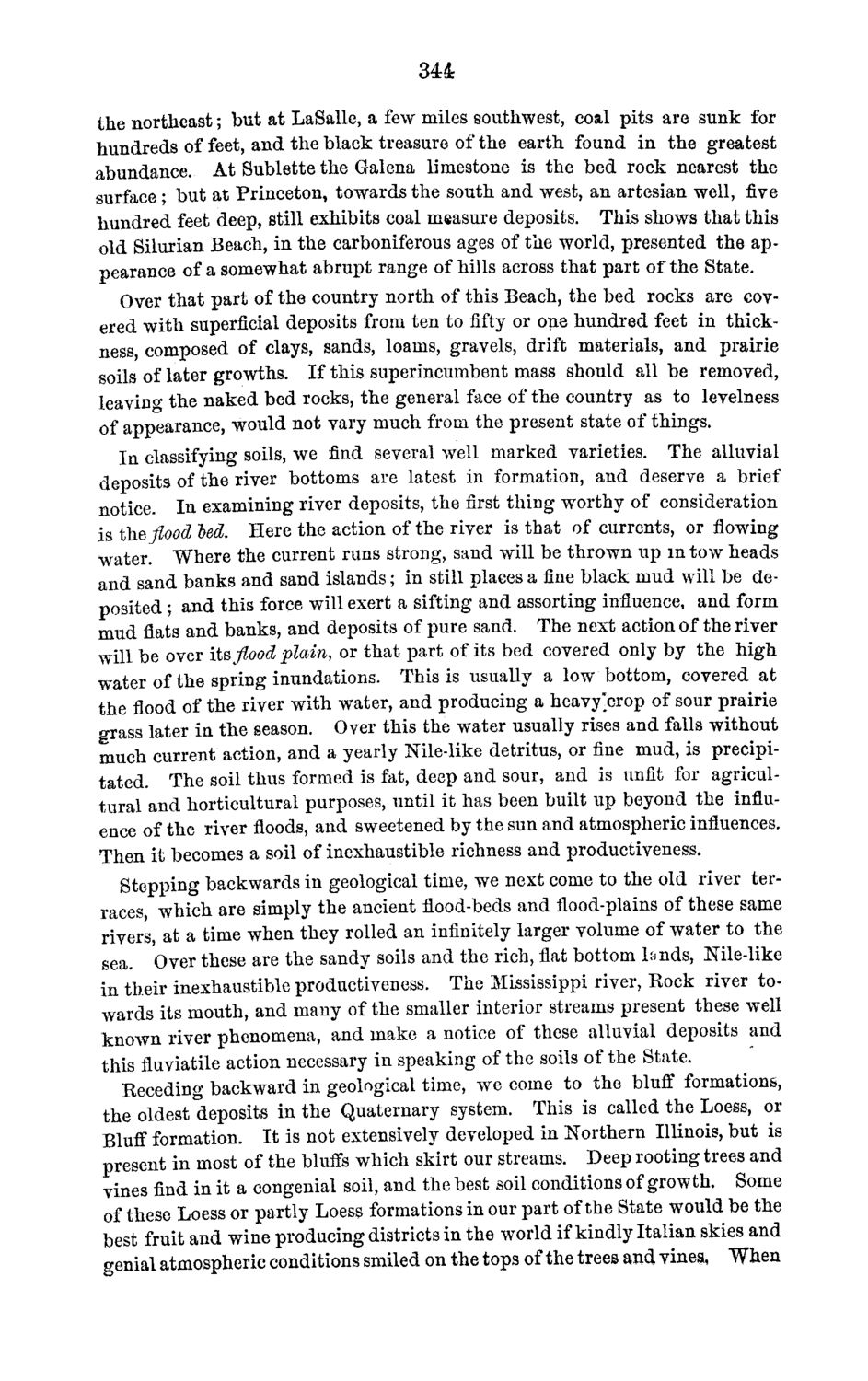| |
| |
Caption: Board of Trustees Minutes - 1870
This is a reduced-resolution page image for fast online browsing.

EXTRACTED TEXT FROM PAGE:
3U the northeast; but at LaSalle, a few miles southwest, coal pits are sunk for hundreds of feet, and the black treasure of the earth found in the greatest abundance. At Sublette the Galena limestone is the bed rock nearest the surface; but at Princeton, towards the south and west, an artesian well, five hundred feet deep, still exhibits coal measure deposits. This shows that this old Silurian Beach, in the carboniferous ages of the world, presented the appearance of a somewhat abrupt range of hills across that part of the State. Over that part of the country north of this Beach, the bed rocks are covered with superficial deposits from ten to fifty or one hundred feet in thickness, composed of clays, sands, loams, gravels, drift materials, and prairie soils of later growths. If this superincumbent mass should all be removed, leaving the naked bed rocks, the general face of the country as to levelness of appearance, would not vary much from the present state of things. In classifying soils, we find several well marked varieties. The alluvial deposits of the river bottoms are latest in formation, and deserve a brief notice. In examining river deposits, the first thing worthy of consideration is the flood led. Here the action of the river is that of currents, or flowing water. Where the current runs strong, sand will be thrown up m tow heads and sand banks and sand islands; in still places a fine black mud will be deposited ; and this force will exert a sifting and assorting influence, and form mud flats and banks, and deposits of pure sand. The next action of the river will be over its flood plain, or that part of its bed covered only by the high water of the spring inundations. This is usually a low bottom, covered at the flood of the river with water, and producing a heavy'crop of sour prairie grass later in the season. Over this the water usually rises and falls without much current action, and a yearly Nile-like detritus, or fine mud, is precipitated. The soil thus formed is fat, deep and sour, and is unfit for agricultural and horticultural purposes, until it has been built up beyond the influence of the river floods, and sweetened by the sun and atmospheric influences. Then it becomes a soil of inexhaustible richness and productiveness. Stepping backwards in geological time, we next come to the old river terraces, which are simply the ancient flood-beds and flood-plains of these same rivers, at a time when they rolled an infinitely larger volume of water to the sea. Over these are the sandy soils and the rich, flat bottom lands, Nile-like in their inexhaustible productiveness. The Mississippi river, Rock river towards its mouth, and many of the smaller interior streams present these well known river phenomena, and make a notice of these alluvial deposits and this fluviatile action necessary in speaking of the soils of the State. Receding backward in geological time, we come to the bluff formations, the oldest deposits in the Quaternary system. This is called the Loess, or Bluff formation. It is not extensively developed in Northern Illinois, but is present in most of the bluffs which skirt our streams. Deep rooting trees and vines find in it a congenial soil, and the best soil conditions of growth. Some of these Loess or partly Loess formations in our part of the State would be the best fruit and wine producing districts in the world if kindly Italian skies and genial atmospheric conditions smiled on the tops of the trees and vines, When
| |